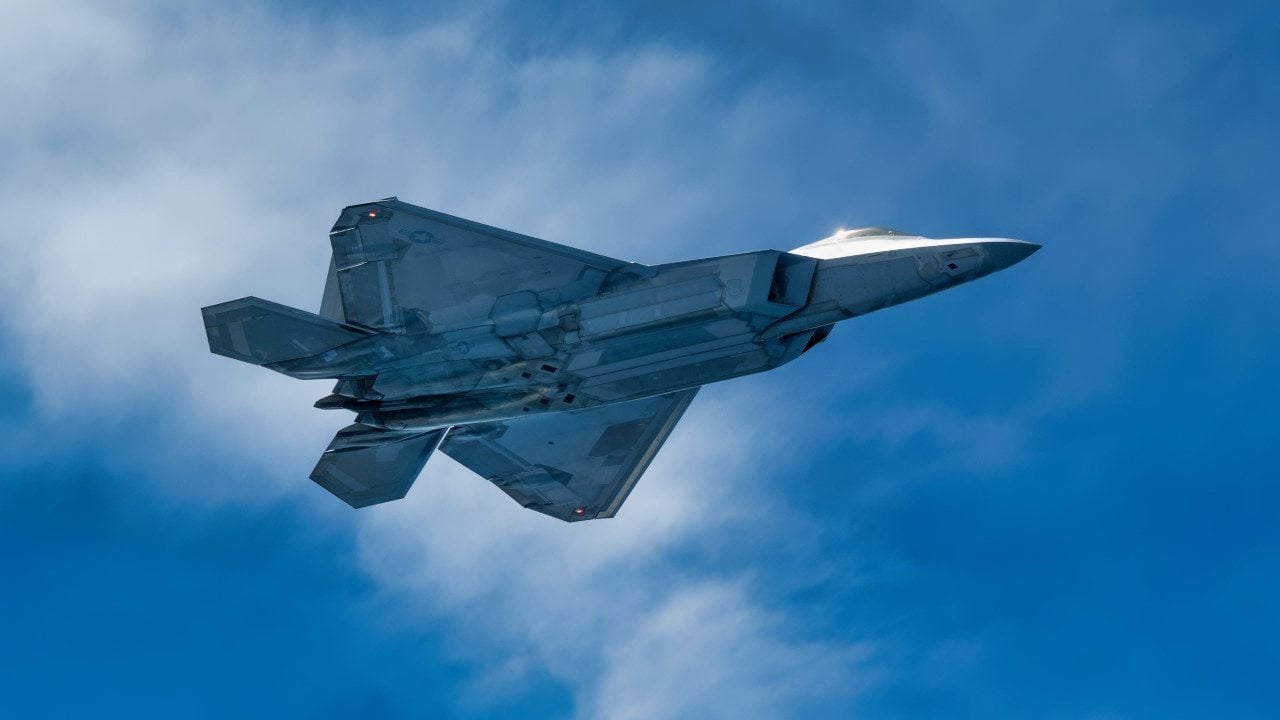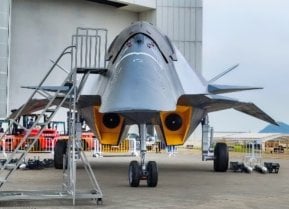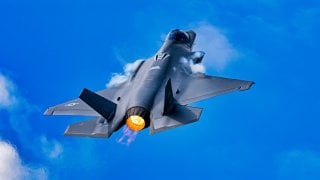F-35 Stealth Fighter Explained in 2 Words (Not Good)
The F-35 Lightning II program faces contrasting perceptions between U.S. criticism and international praise. While Americans focus on the fighter's cost, logistical challenges, and bureaucratic inefficiencies, allies like Israel and Australia hail its performance. Israel's F-35I benefits from custom modifications and a streamlined defense bureaucracy.
Expensive Mess? The F-35 Lightning II has faced criticism in the U.S. for its high costs and operational challenges, but nations like Israel and Australia have found significant success with the aircraft.

-The Israeli Air Force (IAF), with its customized F-35I Adir variant, has used it effectively in combat, benefiting from local modifications tailored to its needs.
-Similarly, Australia’s Royal Australian Air Force (RAAF) praises the F-35 for its interoperability and reliability, citing only minor issues.
-This contrast highlights differences in bureaucracy and operational focus.
-Despite domestic skepticism, the U.S. has also demonstrated the F-35’s combat effectiveness across all three variants.
F-35 Lightning II: Why Israel and Australia Love It Despite U.S. Criticism
To read and hear so many stateside horror stories about the F-35 Lightning II fifth-generation stealth fighter program—whether in U.S. Air Force, Navy, or Marine Corps’ hands—you’d think she was a ridiculously unreliable and overpriced—at least relative to her price tag—warbird.
My The National Interest colleague Harrison Kass talks about the plane’s $80 million unit price tag. Another colleague writes about the Lightning II’s $2 trillion lifetime cost. And yet another colleague, Maya Carlin, criticizes the F-35C variant’s relative lack of operational range.
To top it all off, Joel Hruska of Extreme Tech goes so far as to unflatteringly dub the F-35 an outright “failure.”
Yet, when you look at the droves of foreign military sales customers who’ve purchased the Lightning II, you’d scarcely know you were discussing the very same aircraft.
These overseas customers seem to be quite happy with their F-35s.
We’ll look at two specific examples in an effort to figure out why this drastic dichotomy exists.

The Israeli Example
The Israeli Air Force (IAF) was the first entity to use the F-35 in combat, giving the F-35I Adir (“Mighty One”) variant her proverbial “baptism of fire” against Hezbollah targets in Lebanon in May 2018. (Being the first nation to test an American-made fighter jet has become a bit of an IAF tradition: the IAF was also the first to use the F-15 Eagle and F-16 Fighting Falcon [aka the “Viper”] in combat.)
From all that I’ve read and heard, the IAF has nothing but glowingly positive things to say about their “Mighty Ones.”
A key factor in the IAF’s F-35 success story is the fact that Israel is the only nation with a custom version of the Lightning II. To quote the aforementioned Maya Carlin:
“Lockheed-Martin has refused to undergo major client state-specific modifications to the F-35. Israel was able to maneuver around this barrier and involve its local defense contractors in acquiring the jets. This deal allowed sophisticated helmet sets and wings to be manufactured in Israel by its own defense industry, paid for with U.S. military aid …The F-35I variant can be externally modified by the Israeli Air Force.”
This isn’t surprising. Seeing how Israel has basically spent its entire existence surrounded by hostile foes and therefore is in a near-constant state of war, I think it is a safe bet that Israeli senior military officials (uniformed and civilian alike) have a far greater sense of urgency to cut through the bureaucratic red tape and turf battles than their stateside counterparts.
Like the dictum from early twentieth-century airpower theorist Giulio Douhet says, “Flexibility is the key to airpower.”
The Aussie Example
This past September, I had the honor of interviewing Air Commodore Angus Porter, the Royal Australian Air Force’s (RAAF) air attaché for the Australian Embassy in Washington, DC. When I asked Porter about his country’s F-35s and how they were performing, he responded:
“The general consensus is: We love them, we think they’re fantastic.”
The only criticism he had, and a minor one at that, was some corrosion issues, but he quickly added that those issues were being worked out. He also praised the Joint Strike Fighter’s (JSF) interoperability and ability to communicate with the JSFs of regional allies, including non-English-speaking allies such as Japan and South Korea.
So, What’s the Difference?
So, why the incredible dichotomy? What are the IAF and RAAF doing right with their F-35s/Joint Strike Fighters that the Americans are doing wrong with ours?
Based upon my own experience as a former U.S. Air Force (USAF) officer, overseas private military contractor, and Pentagon contractor, I’d have to say that Israel and Australia, being smaller countries with correspondingly smaller militaries, have far less bloated bureaucracies in their military-industrial complexes than we do. To get a better appreciation for just how convoluted, cost-ineffective, and politically charged the U.S. Department of Defense’s acquisition truly is, read the bestselling, Pulitzer Prize-winning book The Power Game: How Washington Works by Hedrick Smith.
Not All Gloom-and-Doom on the U.S. Side Either
What’s also important to keep in mind, but unfortunately tends to get lost in the shuffle, is the fact that in spite of the stateside Lightning IIs’ troubles, the U.S. Armed Forces have still successfully used three variants of the F-35 in combat (though, as already noted, the Israeli Lightning drivers beat their American counterparts to the punch):
-In September 2018, the U.S. Marine Corps gave the F-35B her first “blooding” with a strike against a Taliban target in Afghanistan.
-In April 2019, it was the F-35A’s turn and the USAF’s turn, employing a pair of them to conducted an air strike against Islamic State targets at Wadi Ashai, Iraq, in support of Combined Joint Task Force—Operation Inherent Resolve.
-Fast-forward to the present month & year, and we’re back to the good ol’ Teufelhunden (“devil dogs”), i.e., the U.S. Marines, this time being the first to use the F-35C in combat, as detailed in a November 18, 2024, press release from the Carrier Strike Group 3 Public Affairs Office.
About the Author: Christian D. Orr
Christian D. Orr is a Senior Defense Editor for the National Security Journal (NSJ). He is a former Air Force Security Forces officer, Federal law enforcement officer, and private military contractor (with assignments worked in Iraq, the United Arab Emirates, Kosovo, Japan, Germany, and the Pentagon). Chris holds a B.A. in International Relations from the University of Southern California (USC) and an M.A. in Intelligence Studies (concentration in Terrorism Studies) from American Military University (AMU). He has also been published in The Daily Torch, The Journal of Intelligence and Cyber Security, and Simple Flying. Last but not least, he is a Companion of the Order of the Naval Order of the United States (NOUS).
Image Credit: Creative Commons.


